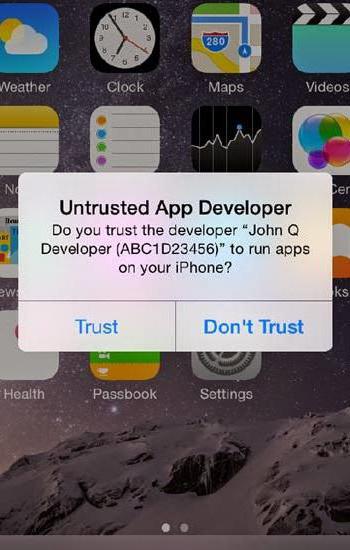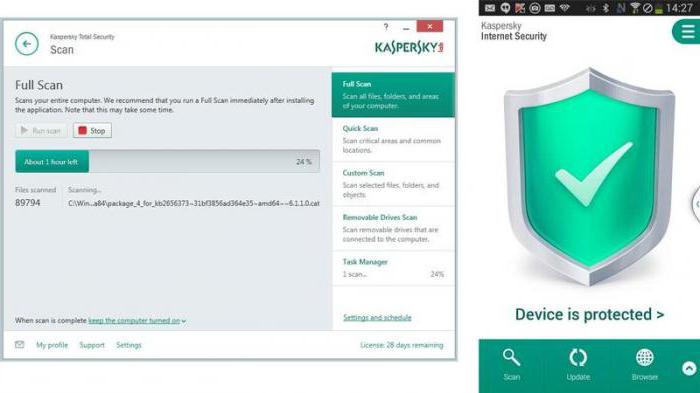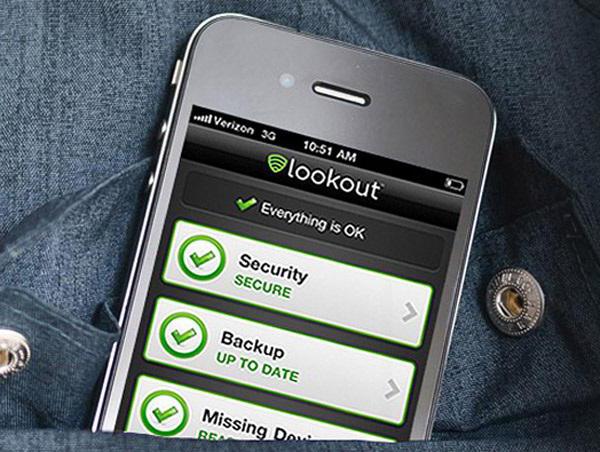How to check an iPhone for viruses: methods and programs
The iOS mobile platform is rightfully considered the most secure in terms of hacker attacks. In general, in the entire history of the existence of this operating system, any successful attacks can be counted on the fingers of one hand. The likelihood that your Apple gadget will catch a virus is reduced to almost zero, but such a possibility still exists.
So, let's try to figure out how to check an iPhone for viruses, whether this is possible in principle, and what you will need for this. We will take into account the most popular gadgets from Apple, that is, models starting from the fourth series (4, 5, 5S, etc.).
How to check an iPhone for viruses?
If you look at all the functionality of iOS and related third-party applications, we won’t see them as such. By typing “antivirus” in the search for the Apple branded store, you will see only one application to install, which will provide you with mostly anti-spam, and not some kind of protection against hacker attacks.
By and large, any special software that helps, for example, check an iPhone 5S for viruses, simply does not exist in the classical sense of this action. That is, here we are talking about ordinary maintenance and cleaning the gadget from various kinds of “garbage” in the form of advertising SMS, banners and other things.
What types of viruses are there on iOS?
The very small number that can be found on this platform are conventionally divided into several types. If you find active signs described below, it means that your device is most likely infected. Before checking your iPhone for viruses, let’s first characterize the threats.

Types of malicious code:
- Harmless. Here we have something unpleasant, but not scary for the operating system, like an old virus that periodically displayed the Shoes message on the main screen in a chaotic manner, or, for example, at one time the very annoying WireLurker, which spammed comics all over the desktop.
- SMS. Malicious code is distributed via SMS messages. This virus, in fact, is not such a virus, because it does not steal information or spam, but simply loads the system until it slows down and freezes.
- Banners. One of the most common problems of the modern user. It is embedded in the built-in browser and begins to “distribute” advertising materials (most often 18+).
- "Thief". This code steals the user's confidential information, from phone numbers to credit card information. Such viruses are usually written for a specific category of individuals and commercial organizations. An example is the case with the IGN bank.
If you encounter the first three types, then there is nothing wrong with that. There is special software (list below) that quite successfully combats these problems. With the last point, things are somewhat more complicated, and removing it is not so easy. Keep this in mind before checking your iPhone for viruses.
How to remove malicious code?
It is almost impossible to remove a truly “high-quality” virus from a system. All kinds of Kaspersky and Avira will not help here. The fact is that the Apple operating system simply does not allow antiviruses to fully penetrate into its internal system space.

Any attempt to hack an iOS gadget, as well as the theft of information through proprietary applications, is quite a significant event for the company. An online service provider will “pick up” this vulnerability without your knowledge, after which the company almost instantly closes the “hole” by releasing an emergency update. The same applies to desktop viruses, so keep this point in mind before checking your iPhone for viruses through your computer.
Antivirus applications
As for the more harmless code, you can deal with it on your own using one of the utilities described below.

Applications to protect your iOS gadget:
- Lookout Mobile Security.
- McAffe.
- Norton.
- Avira.
- VirusBarrier.
All this software can be easily downloaded from the Apple company store. All utilities have undergone appropriate testing and will have virtually no impact on your daily work with your iPhone. The applications do not require any specific knowledge; they are simple and intuitive. All functionality, as a rule, comes down to one single button - “Enable” (and forget).
Well, if you encounter something out of the ordinary and don’t know what to do, then the surest way is to contact technical support, fortunately, they respond instantly to the issue of malicious code. Also keep this point in mind before checking your iPhone for viruses.
